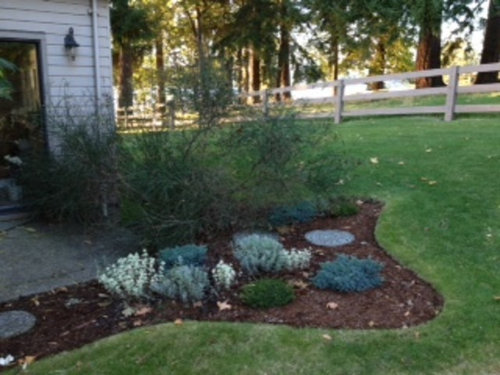Soil is still dry
dottyinduncan
10 years ago
Related Stories

GARDENING GUIDESGardening Solutions for Dry, Sandy Soils
Has your desert or beachy site withered your gardening creativity? Try these ideas for a beautiful, easy-care landscape
Full Story
GARDENING GUIDESGreat Design Plant: Try Blue Bells for Blooms in Dry Soil
This shrub’s violet-blue flowers and silvery foliage brighten low-water gardens all year long
Full Story
GARDENING GUIDESHave Acidic Soil in Your Yard? Learn to Love Gardening Anyway
Look to acid-loving plants, like conifers and rhododendrons, to help your low-pH garden thrive
Full Story
GARDENING GUIDESGardening Solutions for Heavy Clay Soils
What’s a gardener to do with soil that’s easily compacted and has poor drainage? Find out here
Full Story
GARDENING GUIDESGrow a Beautiful Garden in Alkaline Soil
Got alkaline soil? Learn how to manage it and the many beautiful plants that will thrive in this ‘sweet’ soil
Full Story
GARDENING GUIDESHow to Pick a Mulch — and Why Your Soil Wants It
There's more to topdressing than shredded wood. Learn about mulch types, costs and design considerations here
Full Story
GARDENING GUIDESGet the Dirt on Your Garden’s Soil
Understand how your soil supports your plants so you can ensure your garden’s success
Full Story
GARDENING GUIDESHow to Stop Worrying and Start Loving Clay Soil
Clay has many more benefits than you might imagine
Full Story
GARDENING GUIDES10 Solutions for Soggy Soil
If a too-wet garden is raining on your parade, try these water-loving plants and other ideas for handling all of that H2O
Full Story
LANDSCAPE DESIGNFlood-Tolerant Native Trees for Soggy Soil
Swampy sites, floodplains, even standing water ... if you've got a soggy landscape, these trees are for you
Full Story









dottyinduncanOriginal Author
Embothrium
Related Professionals
Allentown Landscape Architects & Landscape Designers · Taylorsville Landscape Architects & Landscape Designers · Lakeland Landscape Contractors · Harvey Landscape Contractors · Indio Landscape Contractors · Nanuet Landscape Contractors · Peachtree City Landscape Contractors · Woodland Landscape Contractors · Chicago Heights Fence Contractors · Claremont Fence Contractors · Fountain Fence Contractors · Newark Fence Contractors · Sammamish Fence Contractors · Whittier Fence Contractors · Kingsburg Fence Contractorsplantknitter
Embothrium
botann
Embothrium
George Three LLC
dottyinduncanOriginal Author
Embothrium
dottyinduncanOriginal Author
seysonn
Embothrium